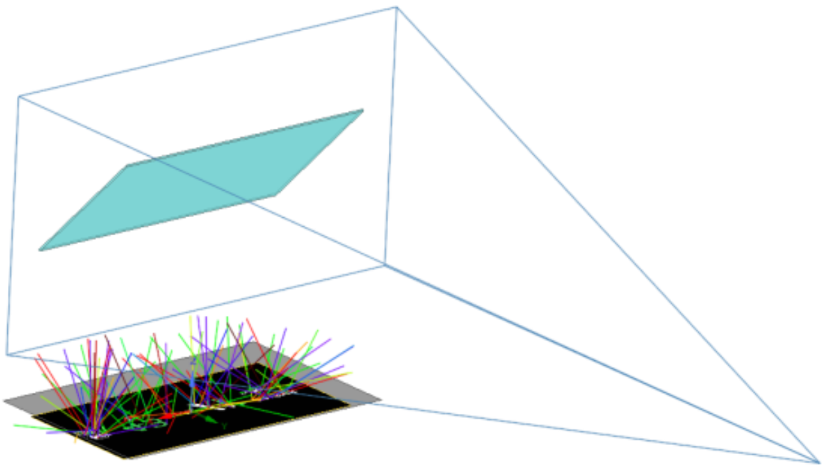Webinar Description | Random Vibration Analysis (PSD) in Ansys
Need an introduction or refresher on performing random vibration analyses in Ansys Mechanical Workbench? You’ve come to the right place.
Analysis of random vibrations is performed to ascertain how a structure will react to random loading.
Crucially, the load input is subjected to random vibration analysis by ANSYS using the power spectral density (PSD) spectrum.

What the difference between random vibration analysis & random response analysis?
The goal of random vibration analysis is to ascertain how structures respond to erratic vibration loads. A sensitive electronic component positioned inside an automobile might react differently to vibration from the engine, rough roadway, and aural pressure.
Meanwhile, the reaction of a system that has been subjected to a continuous nondeterministic excitation, as statistically described by a cross-spectral density matrix, is predicted by random response analysis.
What is Power Spectral Density (PSD)?
PSD stands for the power spectral density of a signal in vibration analysis. Each term stands for a crucial element of the PSD.
- P = Power: The mean-square value of the signal under study determines the PSD’s size. It does not relate to a specific unit of measurement for power, like watts or horsepower. Power, however, is inversely proportional to some quantities’ mean-square values, such as the square of a circuit’s current or voltage. The power of any quantity is equal to that quantity’s mean-square value.
- S = Spectral: The PSD depends on frequency. Similar to how a rainbow depicts the distribution of light over a variety of wavelengths, it represents the distribution of a signal over a spectrum of frequencies (colors).
- D = Density: The PSD’s size is scaled to a single Hertz of bandwidth. The PSD units, for a signal with acceleration measured in unit G, are G2/Hz.
Engineers occasionally substitute the word “power” with the name of the measurement because the name “power spectral density” does not include the measured quantity. They might call the PSD of an acceleration signal the acceleration spectral density, for instance.
Importance of Power in PSD
The signal strength can be conveniently measured using the mean-square value (power).
An accelerometer, for instance, can measure the vibration time-history of a car’s floor panel. The root-mean-square (RMS) value is 0.073G, while the mean-square value is 0.0053G2.
The average amplitude of the signal cannot be determined from the mean value because it is close to zero. The signal can, however, be squared to provide a positive quantity. The mean-square value can then be calculated.
We can take the square root of the mean-square value to get the RMS, which will give us a linear value (in this case, G).
There are an endless amount of waveforms that can be used to generate a PSD plot, but once a PSD is defined, the Grms remain unchanged.
Engineers can use this to compare a PSD to a specification and evaluate whether the Grms is as needed.
In order to confirm that they are measuring the same amount of energy, they can also utilize the Grms to compare two PSD graphs.
Different-Frequency Signals | PSD Analysis
In addition, engineers must use the mean-square value to combine signals of different frequencies.
For example, a common calculation is the summation of two sine waves with different frequencies. Let’s say the mean-square value of the unit sine wave is 0.5, and the RMS value is 0.707. The mean-square value and RMS value of the two waveforms after addition are both 1.0.
- When A and B have mean values of zero, the mean square value of A+B is the sum of their mean square values.
- This is a general outcome in mathematics for two independent variables, A and B. (A+B)2 is the sum’s square, which is A2 + 2AB + B2. The mean value of 2AB is equal to zero if the two variables are independent and have a mean value of 0.
Average of the Two Sine Waveforms Added Together
- In some circumstances, the PSD is represented by the square root of the value that was calculated. As a result, the units of an acceleration PSD could be G/(Hz)1/2. Ensure that you ascertain the PSD units.
Why are Spectral and Density important in PSD?
When dealing with systems that feature resonances, the frequency distribution of a signal offers helpful information.
Moreover, when a wideband signal with a large frequency range is used to drive a cantilever beam at its base, for example, the tip vibration is often recorded by an accelerometer.
The time history of the signal makes it challenging to identify the values of the beam’s resonance frequencies. However, these values may be seen clearly in the peaks of the frequency spectrum of the tip vibration.
The quantity of frequency bands in the distribution determines how large the frequency distribution of a signal is. For instance, three separate frequency bandwidths are used to compute the frequency spectrum of an automobile vibration signal. The frequency bandwidth is proportional to the squared magnitudes of the spectra.
In order to produce a constant value irrespective of the bandwidth, the PSD divides the squared magnitude by the frequency bandwidth.
However, occasionally people mix up the PSD and the bandwidth-dependent frequency spectrum.
And finally, make sure to examine the PSD calculation’s feature of bandwidth normalization applied to the magnitude.
What is the Purpose of Random Vibration (PSD) in Ansys Mechanical Workbench?
In addition to the points made above, the goal of mechanical random vibration analysis is to ascertain how structures react to erratic vibration loads. An illustration would be the reaction of a delicate electronic component put inside an automobile and subjected to road noise, vibration from the engine, and acoustic pressure.
The data are recorded along with the frequency content of the time history (spectrum), which is then employed as the load in the random vibration analysis.
For historical reasons, this spectrum is referred to as PSD, or Power Spectral Density. Since the input excitations in a random vibration analysis are statistical in character, the output responses, including displacements, stresses, and other variables, are also statistical in nature.





